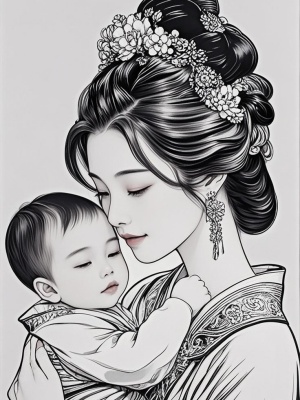The Art of Color in Portraits: A Comprehensive Guide
Introduction
Color plays a pivotal role in portrait photography and painting, influencing mood, emotion, and overall visual impact. Whether you're a professional photographer, digital artist, or enthusiast, understanding how to use color effectively can elevate your portraits from ordinary to extraordinary. This article explores the key aspects of color theory in portraits, offering practical solutions to common challenges.
The Psychology of Color in Portraits
Colors evoke specific emotional responses, making them powerful tools for portrait artists. Warm tones like reds and oranges often convey passion and energy, while cool blues and greens suggest calmness and serenity. Skin tones present unique challenges, requiring careful balance to appear natural yet flattering.
Common problems and solutions:
- Problem: Skin appearing too warm or orange
- Solution: Adjust white balance and use complementary colors in the background
- Problem: Flat-looking portraits
- Solution: Create color contrast between subject and background
Color Harmony Techniques
Creating harmonious color schemes is essential for visually appealing portraits. The color wheel provides fundamental relationships that artists can leverage:
- Complementary colors: Opposite colors on the wheel create vibrant contrast
- Analogous colors: Adjacent colors produce subtle, cohesive looks
- Triadic schemes: Three evenly spaced colors offer balanced contrast
For more advanced techniques, explore our AI Art Guide which covers modern approaches to color manipulation.

Technical Considerations for Digital Portraits
Digital tools have expanded color possibilities in portrait creation. Key technical factors include:
- Color gamut and profile selection (sRGB vs Adobe RGB)
- Monitor calibration for accurate color representation
- Non-destructive editing workflows
Modern AI tools like those featured in our Photo Enhancer can help automate complex color adjustments while maintaining natural-looking results.
Cultural and Contextual Color Meanings
Color symbolism varies across cultures, affecting portrait interpretation. For example:
- White represents purity in Western cultures but mourning in some Eastern traditions
- Red signifies luck in China but danger in Western contexts
When creating portraits for specific occasions like weddings or graduations, consider these cultural associations carefully.
Conclusion
Mastering color in portraits requires both technical knowledge and artistic sensitivity. By understanding color psychology, harmony principles, and cultural contexts, artists can create more impactful and meaningful portraits. Whether working with traditional media or digital tools like AI, thoughtful color choices will always remain fundamental to compelling portrait creation.
For further exploration of portrait techniques, visit our gallery to see examples of exceptional color usage in various portrait styles.